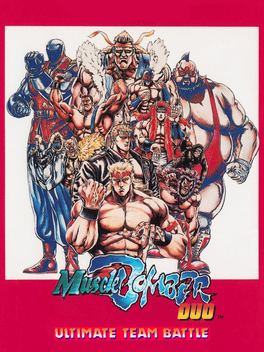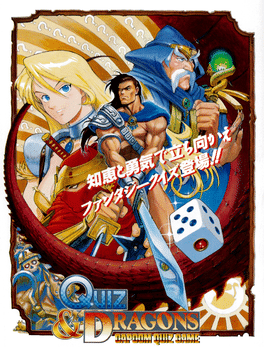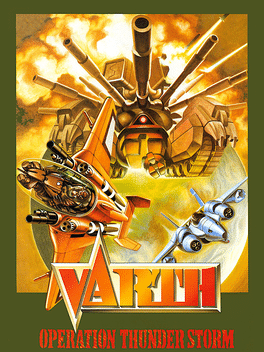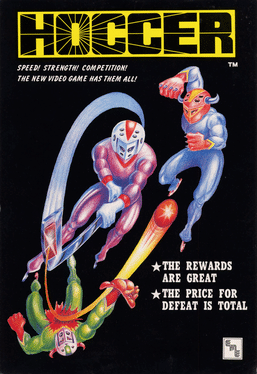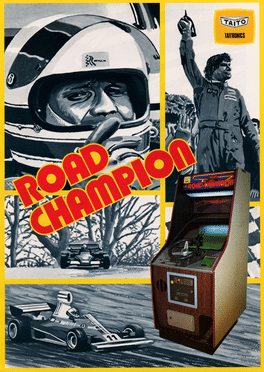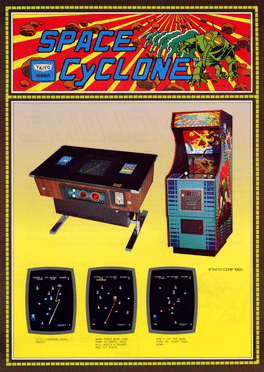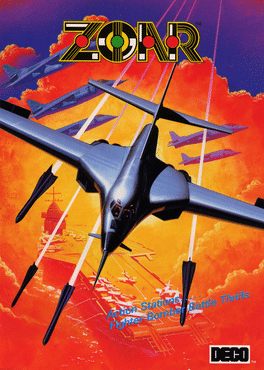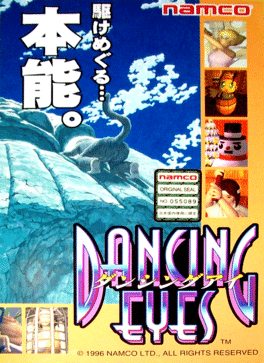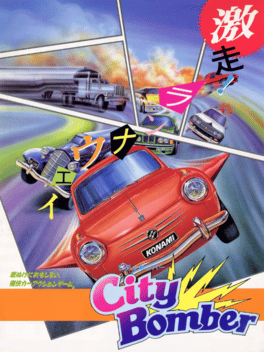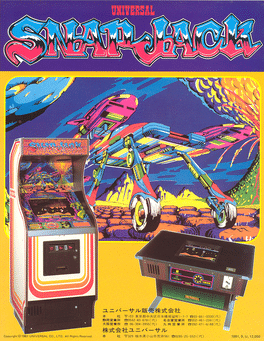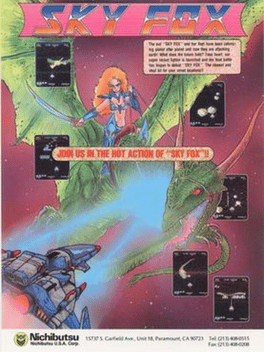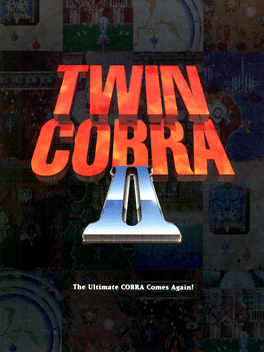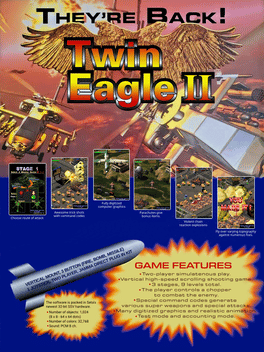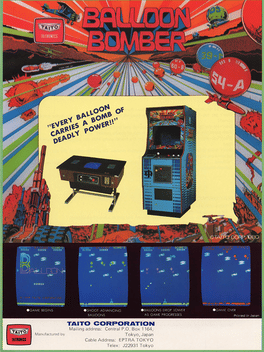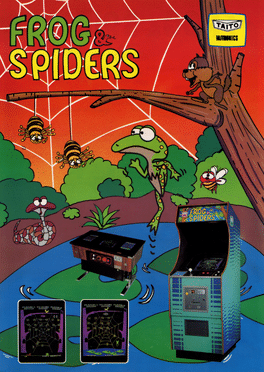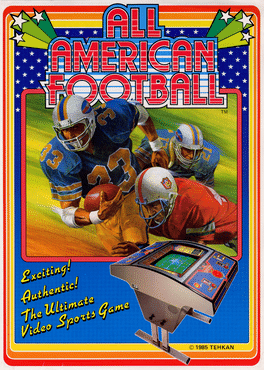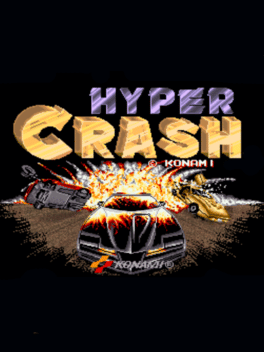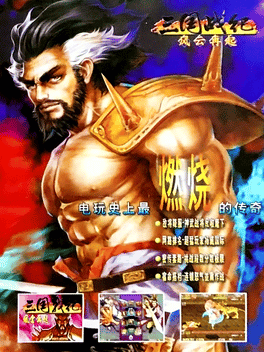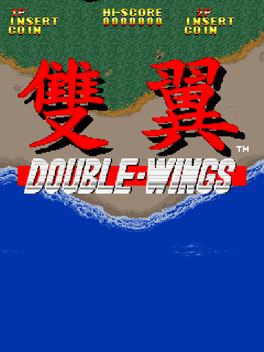Most Popular Arcade Games - Page 135
-
Muscle Bomber Duo: Ultimate Team Battle
1993
Muscle Bomber Duo: Ultimate Team Battle, released in Japan as Muscle Bomber Duo: Heat Up Warriors, is an updated version of the original Slam Masters which eliminates the Single Match mode from the original game, focusing solely on the two-on-two Team Battle mode. The same character can now be chosen by more than one player and each wrestler now has two additional special moves: a dual side attack and a vacuum move. Duo is the only game in the series to retain the Muscle Bomber title for its international releases. -
Quiz & Dragons: Capcom Quiz Game
1992
The far off land of Capconia lived in peace and prosperity for years thanks in part to the Knowledge Tree, a tree in which the holder of the tree's seeds are granted infinite knowledge of the world around them. However, an evil being known as Gordian has taken a seed of the tree and has planted a Knowledge Tree of his own. Gordian has given some of the seeds to some of the dragons in the land and now, which unfortunate soul who cannot answer any of the dragon's questions correctly will be eaten by them. The King then decides to send out four brave warriors entrusted with the knowledge of the land out to stop Gordian and end his tyranny once and for all. -
Varth: Operation Thunderstorm
1992
Operation Thunderstorm, engage! Varth: Operation Thunderstorm is a shoot 'em up game released by Capcom in 1992 for it's CPS-1 Arcade board. The game is about two brave pilots take flight to save humanity from the evil DUO (Dimension Unbody Offender). -
Hoccer
1983
-
Road Champion
1977
-
Space Cyclone
1980
-
Zoar
1982
-
Dancing Eyes
1996
-
City Bomber
1987
City Bomber
1987
In City Bomber, the player is in pursuit of a gang of criminals. In order to keep the criminals from escaping, the player must reach checkpoints within a specified amount of time. At the start of the game, the player's car can shoot missiles at enemy vehicles and is also able to jump over enemies or obstacles. When some enemy cars are destroyed, power-ups are released that augment the car's abilities. Missiles improve the destructive power of the car's weaponry, wings extend the car's jumping distance, rocket boosters speed up the car and buzzsaws allow the car to ram obstacles without damage for a short time. Collisions with other cars are not generally harmful to the player, although they may slow down the car. Oil slicks dropped by enemies will spin out the car and slow it down significantly. Collisions with obstacles or falling off the course will destroy the player's car. While the player has an unlimited supply of cars, crashes will cost the player time and the new car will lose all previously-collected powe -
Snap Jack
1981
-
Sky Fox
1987
Sky Fox
1987
The game is a vertical shoot 'em up in the style of Galaga and Phoenix,but with eight-way movement across the screen and parallax scrolling for the stars backgrounds. At the player's disposal to fight the approaching enemies, some of them made in pseudo-depth 2.5D graphics with scaled sprites, is a small space fighter capable of firing two types of projectiles: the unlimited but slow rockets and the fast laser shots that are limited by draining the ship's power. The power can be refilled, and the ship itself upgraded, through collecting the power-ups that appear after destroying certain enemies. The game can be played by up to two players in alternating turns. Similar as in Gorf, it features several different types of waves (stages). For instance, one stage features space witches saddle-perched on either serpentlike Chinese dragons or Western-style winged dragons: the dragons must to be hit repeatedly in the weak point of their heads to be killed, after which the riders themselves can be shot for a score bonus. Th -
Twin Cobra II
1995
Twin Cobra II
1995
Twin Cobra II is the sequel to Twin Cobra. The game was in development by Toaplan, but it was closed down in 94. Since Taito owned the Tiger-Heli/Twin Cobra rights, being the publishers they let Takumi finish up the game. It was their first release. -
Twin Eagle II: The Rescue Mission
Twin Eagle II puts you in command of a helicopter in the middle of urban warfare. After the first-and frankly mediocre-Twin Eagle, this new section provides two or three enhancements that make it a bit less undrinkable. But good ideas without proper implementation have never been successful ... Your vehicle is equipped with two shots: a direct hit and a missile on the ground. These missiles on the ground are theirs alone sheer madness: they allow you to destroy everything on screen! You like to destroy buildings, trains passing by? Then you can give to their heart. Moreover, these missiles are the only way to destroy enemy ground. Your fire front can be customized by momentarily enough bonuses in the game, but always keep the same configuration, namely two parallel shots. And lastly, your helicopter has a special attack which is also rotating think Zero Gunner. -
Balloon Bomber
1980
-
Frog & Spiders
1981
-
All American Football
1989
An American football game up to four players with all the features of "John Elway's Team Quarterback" and much more : improved graphics, sideline shop, etc. -
Daytona USA 2: Battle on the Edge
1998
Daytona USA 2: Battle on the Edge is an arcade racing game released by Sega in 1998 as a follow-up to the extremely successful Daytona USA. The game featured vastly superior graphics, utilizing the Sega Model 3 hardware. The majority of Daytona USA 2 cabinets were released as deluxe models (with far fewer Twin Cabinets), which could be linked together for up to four players. A notable change from the original is that the player has the choice from multiple cars, each with varying capabilities for varying levels of player experience. Just like before, the game has three courses – a Beginner course with 8 laps, an Advanced course with 4 laps, and a long Expert course with 2 laps. The 'time lap' mode also returns, and is accessed in the same manner – by holding down start at the transmission select screen. Like the original game, mirrored versions of the tracks can also be played by holding down the Start button when selecting the course. It is recommended, however, that the player has had mastery of the course be -
Hyper Crash
1987
Hyper Crash
1987
Player driving a black night rider like car to race against many red cars and ultimately can crash them into oil barrels or walls. -
Knights of Valour Super Heroes
1999
This is an upgrade to the original Knights Of Valour that features more selectable characters and special moves. Knights of Valour is a 2D (2.5D gameplay) arcade weapon-based side scrolling beat'em up, like Golden Axe or Dungeons & Dragons: Shadow over Mystara. The game is loosely based on the Chinese historical novel Romance of the Three Kingdoms (action starts in 16th year of Han Dynasty) and main enemy is Sun Quan, who kidnapped infant Adou. Player can choose one from 5 characters ( Five Tiger Generals of Shu, each has various weapon) - Zhao, Zhang Huang, Guan and Ma. The rest is simple - he goes right, kills enemies and bosses. Enemies have various weapons - swords and shields, spears, bows. The player can find various treasures for points. -
Double-Wings
1993
Double-Wings
1993
You pilot an old aeroplane, shooting and bombing everything in sight. A bit like Capcom's classic WWII fighter, but with better graphics.
